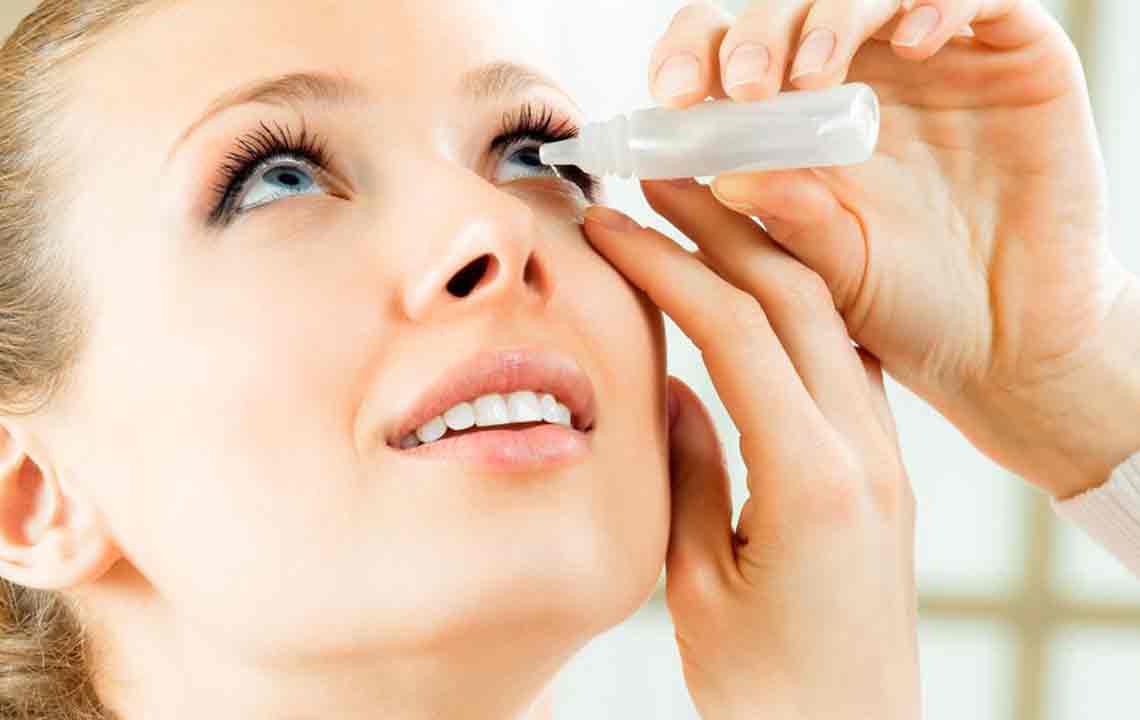Dry Eyes – Symptoms, Causes, and Treatments
Dry eye syndrome can occur if the eyes tend to not produce sufficient tears or there are chances of tears drying quicker than usual. Tears in the eyes are essential because they provide moisture and lubrication to help you see and keep your eyes comfortable. Tears are a mixture of water for moisture, oil to lubricate, mucus for uniform spreading, and antibodies to save the eye from any infection.

What are the symptoms of dry eyes?
When the glands fail to provide enough moisture for the eyes, the usual symptoms include the following:
- Having a dry, scratchy, and painful sensation in the eyes
- A feeling that there is some foreign particle stuck near the eyes
- Redness and a persistent itchy feeling
- Tired eyes
- Blurred vision
At times, reflex tearing can cause dry eye syndrome by creating excessive tears in the eyes. It happens because the lack of moisture irritates the eye sending a distress signal through the body’s nervous system for more lubrication. To make up for the dryness, the body sends a flood of tears, which are mostly water, and don’t act like normal tears. The condition is similar to what happens when one gets sand in the eyes. The water can wash debris away, but they can’t act as a lubricant to the eye’s surface.
What causes them?
Several factors can cause the dry eye syndrome. At times, a generic thing such as the air conditioner, heater, or other things could dry out the tear film. There are other causes that are included are as follows:
Aging: This is more common in older people than the younger ones. Menopause, which comes with age, can set the dryness too. With age, the eyes produce lesser tears and the eyelids become less effective in spreading the tears over the eye’s surface.
Environmental factors and activities: The sun, wind, dry climate, hot blowing air, high altitude, etc. can have a drying effect on your eyes. Moreover, certain activities such as reading, writing, or working with a computer can tend to cause dryness.
Medicines: Side effects of certain drugs like antihistamines, diuretics, antidepressants, and beta-blockers are thought to cause dryness.
Eye surgery: Some people might end with this syndrome of dry eyes, particularly after a corrective laser surgery, after some weeks of the surgery. Mostly it clears up for a rare few it might continue.
Contact lenses: Excessive usage of contact lenses can make the eyes dry. Changing the lenses or restricting to a shorter usage time can improve the situation.
Dry eye treatment options
Dry eye syndrome is a chronic and typically progressive condition. It may not be completely curable; however, this would depend on its cause and severity. However, in most cases, dry eyes can be managed successfully, usually resulting in noticeably greater eye comfort, fewer dry eye symptoms, and sometimes sharper vision as well.
There are a number of options to treat dry eyes. A doctor would recommend which treatment would suit an individual with dry eyes.
Artificial tears: One of the most common dry eye treatment options, these are nothing but the lubricating eye drops that is recommended for mild cases of dry eyes caused by using computers, reading, or watching excessive TV. Over-the-counter (OTC) lubricating tear drops or artificial tears are available in a wide range and with varying viscosity. However, before settling with one of the multiple options available, its good to consult your doctor. Some of the eye drops are watery and provide instant relief but may not sustain for a long term. In cases of chronic eye dryness, go for an eye drop with greater viscosity. Keep using the drops even though you feel your eye is fine. If the eyes dry out while sleeping, use a thick ointment on the eyes at night.
Restasis: Cyclosporine or Restasis is a prescriptive eye drop that helps boost the eyes for tear production. Instead of simply lubricating the eyes, the agent inside Restasis reduces the inflammation associated with dry eye syndrome and helps the eye produce more natural tears to keep them moist, comfortable, and healthy. However, heal won’t come in a jiffy. Patients who start with Restasis have to use the drops for a minimum of 90 days to receive the full benefit of the treatment. At the initial stage, for the first few weeks, some might even experience burning eyes. However, this is also one of the most commonly used dry eye treatment options.
Testosterone cream: Dry eyes can also be related to a lack of testosterone in the oil glands on the eyelids. Doctors might prescribe a testosterone cream for application on the eyelids. It helps the oil glands work better.
Xiidra: Xiidra, like Restasis, is aimed at reducing inflammation that is associated with the signs and symptoms of dry eyes by kick-starting tear production in the glands.
Lipiflow: Using heat and pressure this medical device unclogs blocked glands in the eyelids to start producing oil in the tears. This keeps the tears moistened and prevents them from evaporating.
Steroid eye drops: Steroid eye drops are generally used short-term along with long-term measures such as in conjunction with eye drops or Restasis.
Omega-3 supplements: Research has indicated that dietary inclusion of omega-3-rich food such as flaxseed oil, fatty fish such as sardines, tuna, and mackerel, walnuts, etc. are also beneficial in relieving symptoms of dry eyes.
You can use these dry eye treatment options to get effective relief from the discomfort faced.


